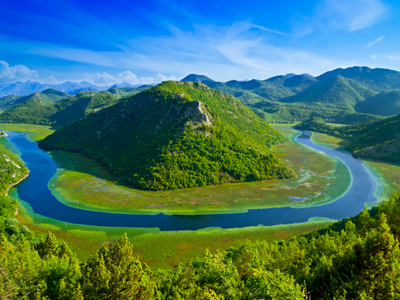
What is a River?
Rivers and their features are a major topic in GCSE Geography. This quiz answers the question of what exactly a river is and looks at some of the features found along the course of a river, such as their sources, meanders, rapids and estuaries.
All over the world you'll find cities and towns located on the banks of rivers. We settle on the flood plains and farm the rich fertile soil; we build our cities at the furthest points inland that a ship can reach; we rely on rivers for industry, transport and power worldwide. But these geographical features that run through our history, our cultures and our civilisations have a couple of stings in their tail - floods and, in the modern world, pollution. Science and geography are now combining to return rivers to their more natural, less lethal forms.
Ready for more?
not all...
quizzers. Try to win a coveted spot on our Hall of Fame Page.







